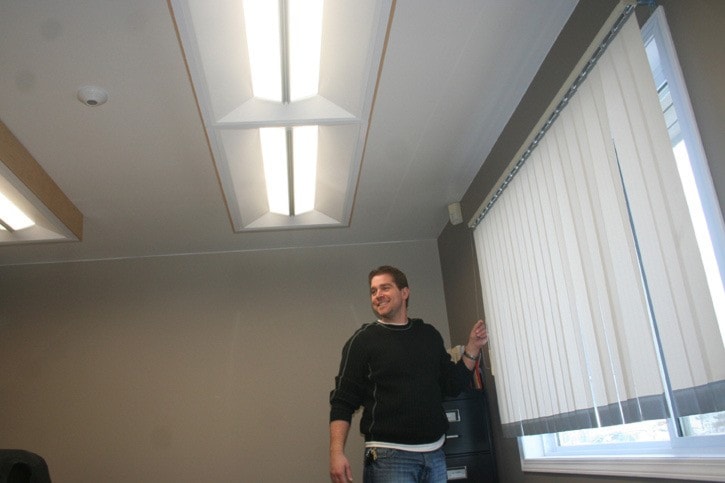Apryl Veld - Omineca Express
School District 91 is ahead of the curve in the province.
Our school facilities are one of the first to be making significant upgrades to buildings and fixtures to keep more money in the school district’s budget, instead of it going away in carbon taxes.
As you may be aware, British Columbia has become carbon neutral. In 2007-2008 the province started paying offsets and started to offer initiatives, taxing everybody and business on energy usage.
But as people will tell you, those who lower their consumption of energy get to keep the savings.
In District 91 last year, our schools and equipment emitted 3500 tonnes of Co2 and we paid taxes on 2500 of that. So with that $25 a tonne tax, it means we must pay that cost out to the Pacific Carbon Trust, who in turn build wind farms, plant trees and so forth for carbon neutral initiatives.
“But why not save that money and put it into our own classrooms and equipment to do green initiative ourselves?” maintenance coordinator for east area, Tim Neudorf said.
By spending money to address energy waste, we are getting savings that will keep giving for decades, he noted. The district is doing extensive auditing of all fixtures to see which are burning up the budget fastest.
“Lighting is a big part of this ... also we’re insulating walls, pipes and upgrading appliances to energy star,” Neudorf noted.
“We’re looking for the biggest savings from the least amount of cost invested,” the coordinator added, “we’re after the districts worst offenders.”
He names Burns Lake school as just one of these inefficient schools. This is because no electrical engineer assessed the school’s needs before it was built and fixtures were installed.
Many walls of our district schools are concrete, “and so we are essentially heating the outdoors,” he added.
The district’s old lighting is burning lots of energy as lights are on all day in a school regardless if anyone is in that hallway, classroom or gymnasium.
So the maintenance crews have been busy changing some of these lights to LED fixtures which use less than half the power of the old ones.
They’re also putting up sensors that can tell when someone is in a room, and if not a sensor turns out lights. These lights have been installed at Vanderhoof’s Evelyn Dickson school and the changes will pay for the installation costs within 2-5 years, they said, including the $2,000 for cranes to reach the gym ceiling. The lights also have a longer shelf life.
“Evelyn Dickson’s immediate (projected) savings will reduce carbon by 1800 metric tonnes,” Neudorf said, “that is $4,500 per year saved, just in one school ... $4,500 of that can stay in the classroom for programs.”
The district has another Tim working on this and he has a book the size of the Tokyo phone book for reference.
Tim Bancroft is one of those power nerds ... he will tell you a hundred different ways lighting can be made more efficient ... and he can measure it down to the gigawatt second. A lighting-concept engineer by trade, having done this for a decade already, Bancroft said they would like to see other schools get the benefits ours are starting to reap.
“We are one of the first to do this, and we’d like to reach out to others,” he said, “Some are just waiting to see the results before they start, but we calculated our savings and went for it.”
The Tims said they could tell with the hike in hydro and gas rates, along with taxes, we’d be so much farther ahead but getting a jump on this. They had already got grants to re-tool school buses and replace boilers, and now it was time for more high tech changes they said.
“We’re the early adapters,” Neudorf observed.
He’s using a term for animals or people picking up a new behavior or tool to help them survive change. The change in this case is high energy costs.
The two Tims also show off some lighting sensors that keep lights at the same intensity depending on how much light comes from outside. For instance, as the sun comes out, the lights adjust to dim slowly, and burn less power, because nature is giving us some free light.
More numbers to chew on: the school district’s utility costs for natural gas-heated boilers came in at three quarters of a million dollars last year, electricity cost a half million and propane $250,000.
“That’s $1.4 million in energy costs,” Neudorf marvelled, “but even if the hall lights were on say, 2-4 or even 7-8 hours a day instead of 14, in all the schools district wide, imagine the savings.”
The manager and maintenance area coordinator praised the local school board for seeing the benefits of having more efficient schools.
